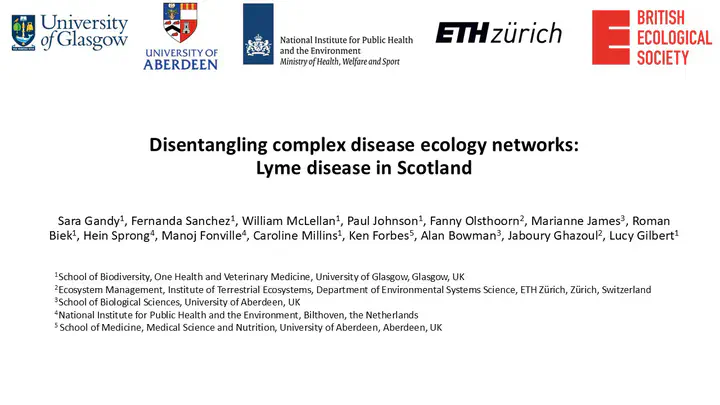Talk at the BES conference in December 2024

Abstract
Quantifying the strengths of interactions in complex ecological networks is challenging. For vector-borne disease, overcoming this challenge is fundamental for understanding the ecological mechanisms shaping disease hazard. Here we quantified the strengths of the hypothesised direct and indirect mechanistic pathways through which deer affect vectors and pathogens in the Lyme disease ecological system by conducting a meta-analysis using data from 39 sites across Scotland. Structural equation modelling revealed that, as predicted, deer had a positive overall effect (direct and indirect pathways combined) on tick density and a negative overall effect on pathogen prevalence. Deer had a positive overall effect on Lyme disease hazard (the density of infected ticks), indicating that their negative effect on pathogen prevalence was weaker than their positive effect on tick density. A key novelty this study was teasing apart the direct and indirect pathways for each of these overall effects, and demonstrating that they were primarily driven by direct mechanisms, such as deer reducing pathogen prevalence by diverting feeding ticks from pathogen transmission hosts (rodents). Although deer negatively affected rodent abundance, the hypothesised indirect pathways from deer to ticks and pathogen, acting through vegetation and/or rodents, were weak. This could result from low densities of rodents relative to deer in Scotland, consistent with Scotland having among the lowest Lyme disease pathogen prevalences in Europe. Having quantified the mechanistic pathways driving Lyme disease hazard, our results can inform strategies for ecosystem-specific disease mitigation, such as deer management.